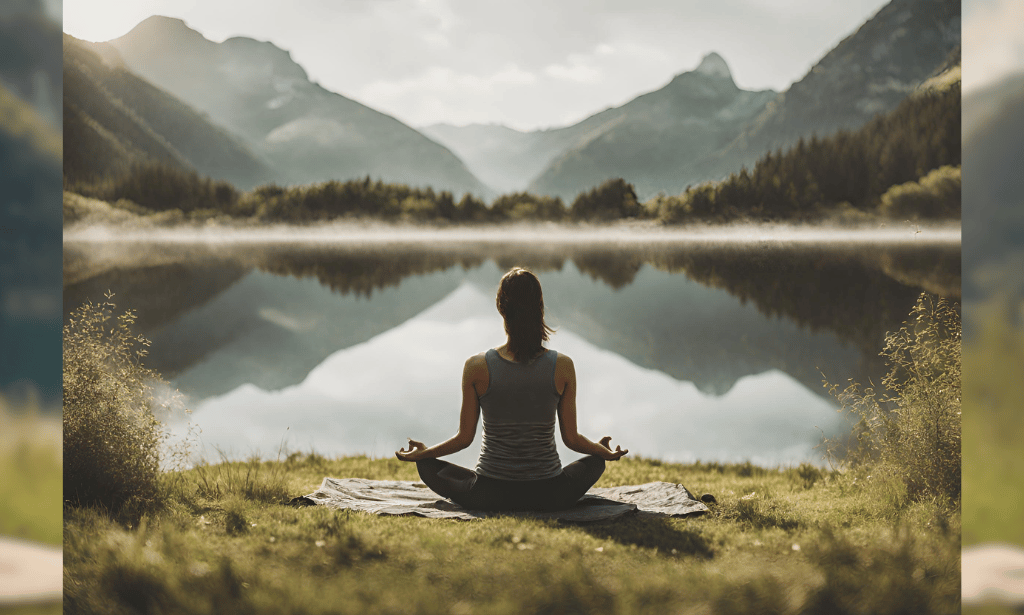Introduction to Mindfulness
In today's fast-paced world, finding inner peace amidst the chaos can seem like an impossible task. However, with the practice of mindfulness, it becomes achievable. Mindfulness is the practice of being present in the moment, fully aware of our thoughts, feelings, sensations, and surroundings without judgment. It involves bringing attention to the present moment, cultivating a sense of clarity and calmness.

Benefits of Practicing Mindfulness
Physical benefits
Mindfulness has numerous physical benefits, including reduced blood pressure, improved immune function, and better sleep quality.
Mental benefits
Practicing mindfulness can lead to reduced symptoms of anxiety and depression, enhanced cognitive function, and increased resilience to stress.
Emotional benefits
Mindfulness helps in regulating emotions, fostering greater emotional intelligence, and promoting a sense of overall well-being.
Techniques for Practicing Mindfulness
Mindful breathing
One of the simplest yet most powerful mindfulness techniques is mindful breathing. By focusing on the breath, we anchor ourselves in the present moment, calming the mind and reducing stress.
Body scan meditation
Body scan meditation involves systematically scanning through different parts of the body, bringing awareness to sensations and releasing tension. It promotes relaxation and body awareness.
Mindful walking
Walking mindfully involves paying attention to each step, the sensation of the ground beneath our feet, and the surrounding environment. It can be practiced anywhere and is a great way to cultivate mindfulness in daily life.
Incorporating Mindfulness into Daily Routine
Finding moments for mindfulness amidst busy schedules is crucial. Whether it's taking a few mindful breaths during a hectic workday or practicing a short meditation before bed, incorporating mindfulness into daily routines is essential for reaping its benefits.
Mindfulness for Stress Reduction
Techniques for managing stress through mindfulness
Mindfulness techniques such as deep breathing, progressive muscle relaxation, and visualization can effectively reduce stress levels and promote relaxation. By bringing attention to the present moment, we can break the cycle of worry and anxiety.
Cultivating resilience with mindfulness practices
Through regular mindfulness practice, we can cultivate resilience and strengthen our ability to cope with life's challenges. Mindfulness helps us develop a greater sense of perspective and acceptance, enabling us to navigate stressful situations with greater ease.
Mindfulness for Emotional Regulation
Understanding emotions through mindfulness
Mindfulness allows us to observe our emotions and thoughts without judgment, providing us with the space to respond rather than react impulsively. By cultivating mindfulness, we develop the capacity to navigate difficult emotions with greater clarity and compassion.
Using mindfulness to navigate difficult emotions
Through mindfulness practice, we learn to recognize and accept our emotions without becoming overwhelmed by them. By bringing awareness to our emotional experiences, we can respond to them with greater wisdom and skill, fostering emotional resilience and well-being.
FAQs (Frequently Asked Questions)
Is mindfulness suitable for everyone?
Yes, mindfulness is a practice that can benefit people of all ages and backgrounds. However, it's essential to approach it with an open mind and a willingness to explore.
How long does it take to see the benefits of mindfulness?
The benefits of mindfulness can vary from person to person. Some individuals may experience immediate improvements in their well-being, while others may require more time and consistent practice to notice significant changes.
Can I practice mindfulness without meditation?
Absolutely! While meditation is a common form of mindfulness practice, there are many other ways to cultivate mindfulness in daily life, such as mindful breathing, walking, eating, and even washing dishes.
What if I find it challenging to stay present during mindfulness practice?
It's entirely normal to experience wandering thoughts or distractions during mindfulness practice. The key is to gently acknowledge these distractions and gently bring your focus back to the present moment without judgment.
How can I integrate mindfulness into my busy schedule?
Even amidst a busy schedule, there are ample opportunities to practice mindfulness. You can start by incorporating short mindfulness exercises into your daily routine, such as taking a few mindful breaths before starting work or practicing mindful eating during meals.

You must be logged in to post a comment.